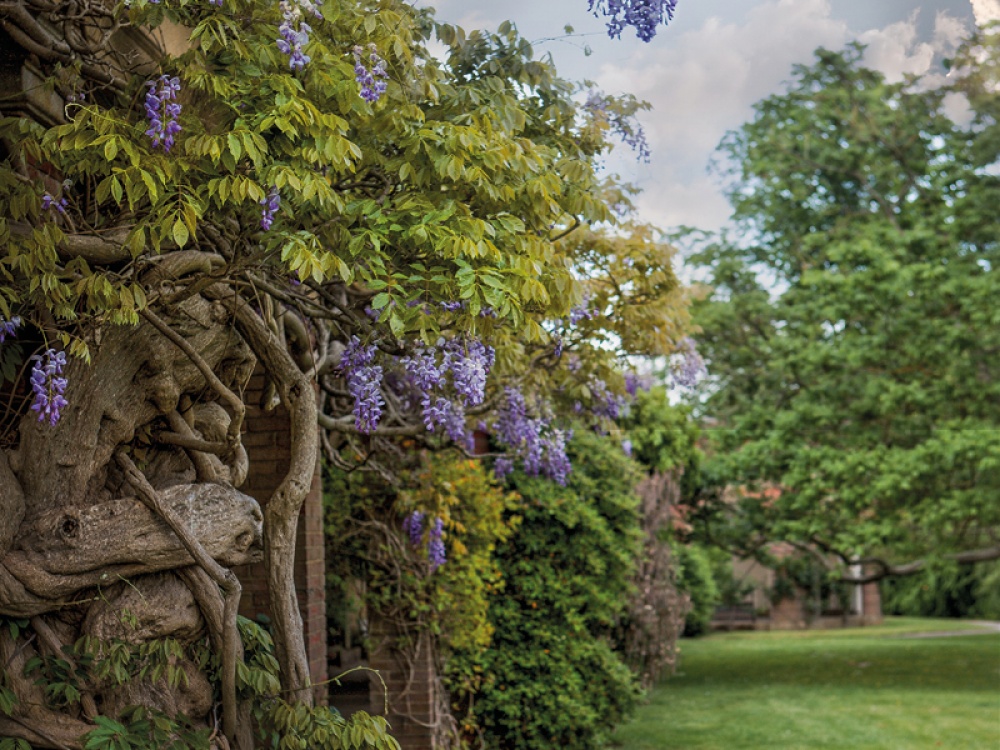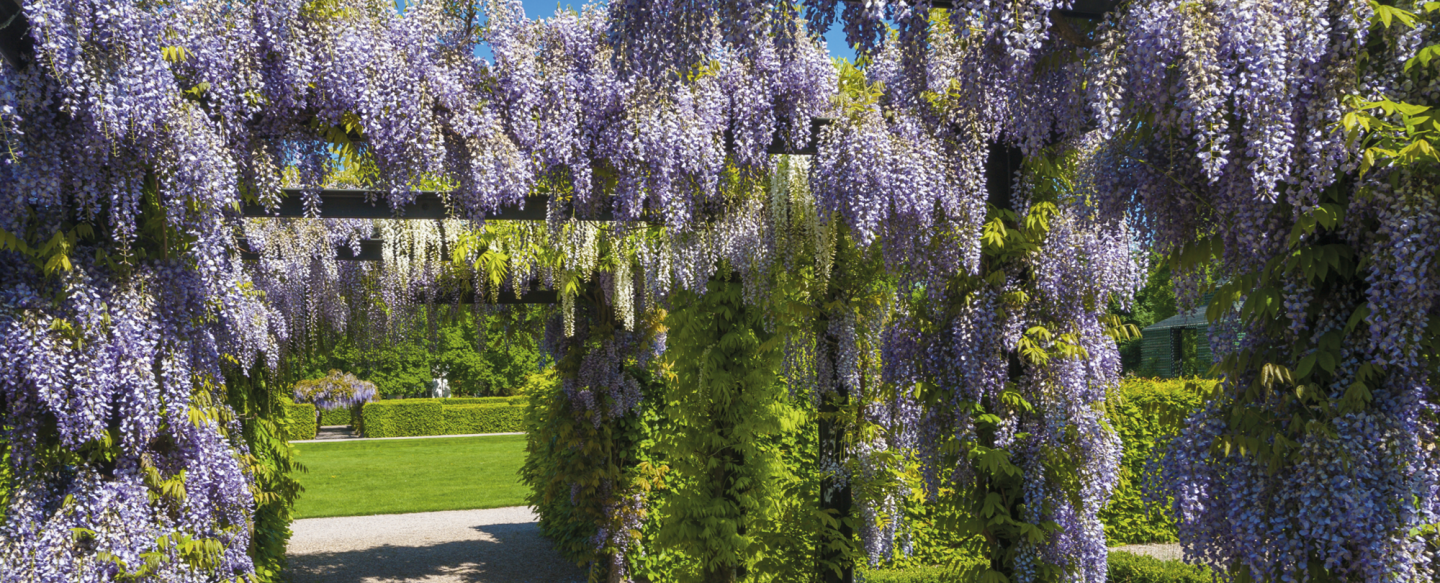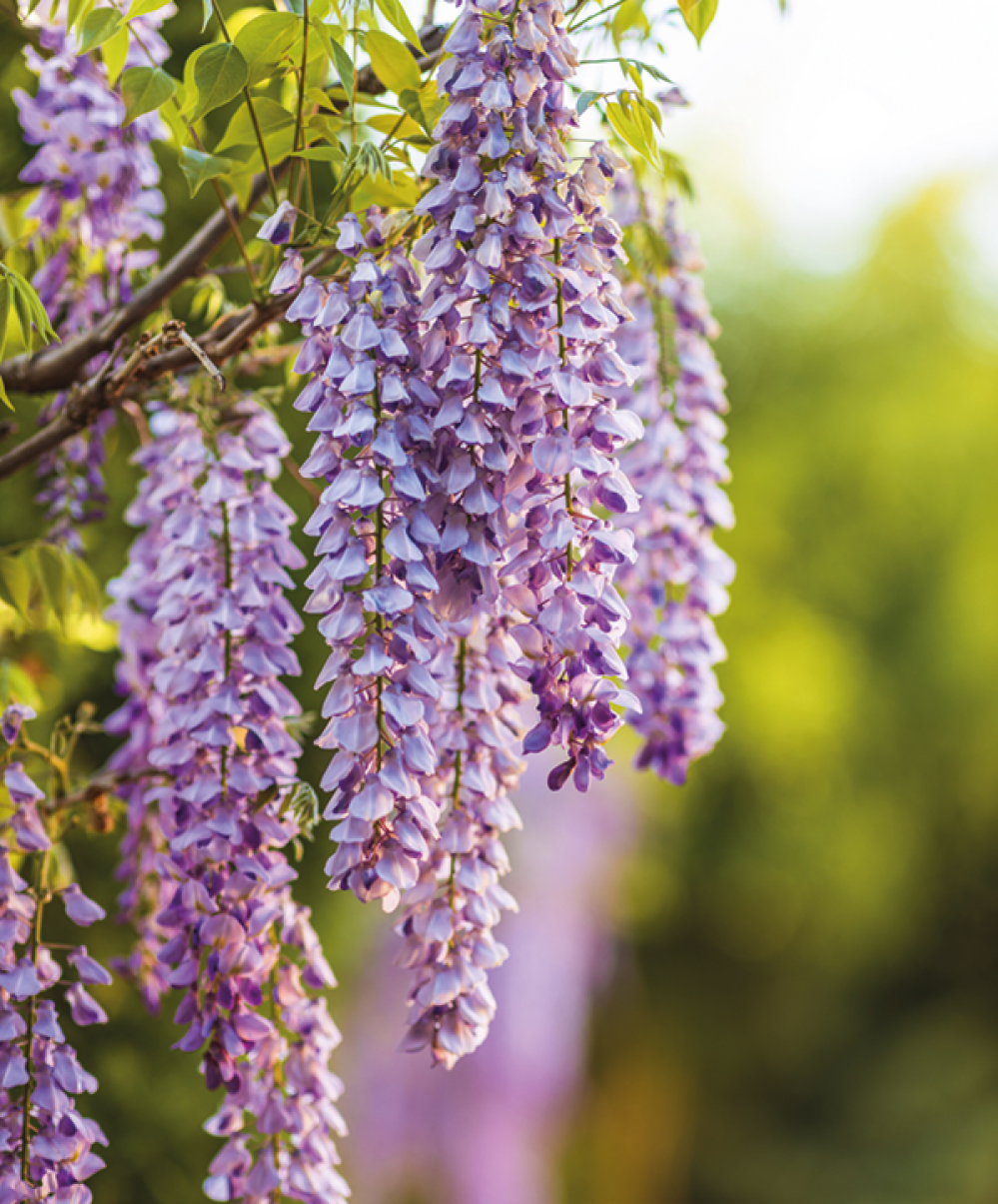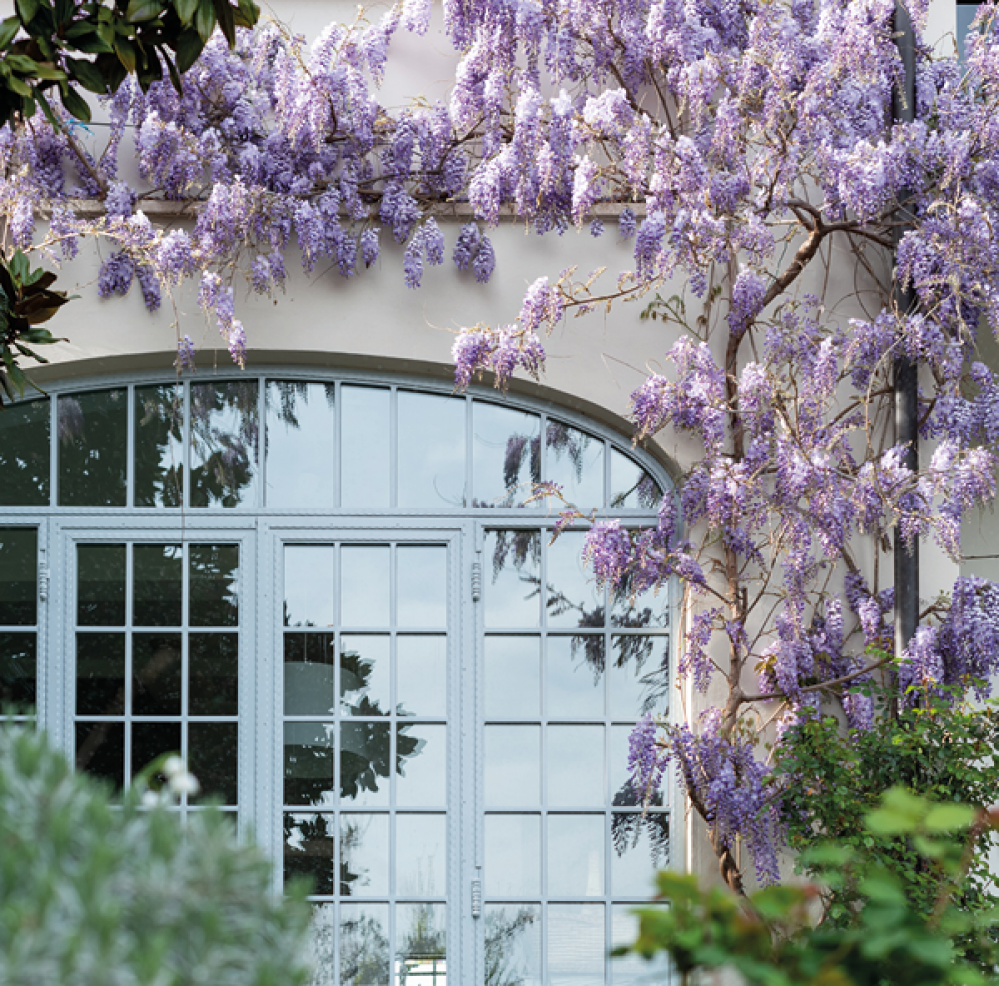How to Grow and Prune Wisteria in Your Garden

Fragrant candyfloss clouds that trail over arches and walkways; wisteria is the stuff of fairytales
Whether you dream of a quaint cottage swaddled in rambling growth or a gnarled old tree wrapped in purple, paler lilac or white; wisteria can be trained to grow amongst trees, spread along walls and fences, climb pergolas and cover just about anything it can get its roots on if left unsupervised. Unlike the majority of climbing plants that rely on suckers, roots and tendrils to attach themselves to structures, wisteria twine their stems around anything they can and hoist themselves off the ground in search of sun. Capable of growing to around 20 metres high and ten metres wide, the largest wisteria vine recorded spans almost an acre.
While the majority of us grumble at the prospect of a rain-soaked summer, wisteria will thrive in the endless downpours. Favouring damp woodland and moisture-rich banks near streams, emulating these conditions will give you a head start in cultivating wisteria. Best planted in spring or autumn, and flowering from April through June, wisteria is somewhere between a fussy child and grumpy old man when it comes to pruning and propagation. Preferring full sun and a south facing spot, (it will grow in partial shade but will flower less vigorously as a result), it requires careful pruning pretty much straight away. Wisteria does not take kindly to being moved or disturbed, especially if it is more than a year old. Despite their rambling nature, wisterias can grow well in containers, which is particularly helpful when it comes to keeping them under control, and means those of us with small gardens can enjoy wonderful wisteria too.
Wisteria are deciduous vines native to the eastern states of North America, China and Japan. There are 10 species in the genus, and the most common is the Chinese wisteria sinensis. Its deep lilac flowers bloom in late spring and hang down in elegant columns. Choosing a plant that has been grown from cuttings or by grafting tends to be the more reliable option for success as seed-raised wisterias tend to flower less frequently and can even take up to 20 years to flower.
Read More: Nine of the Best Gardens to Visit in and Around Yorkshire

Wisteria needs pruning twice a year to remain healthy, once in July or August and again around January. Summer pruning involves cutting back the green shoots of the current year’s growth to five or six leaves after flowering. This not only controls the size of the plant but encourages it to form more buds rather than excess greenery. Come winter, cut back the same growth to two or three buds when the plant is dormant and lifeless, this ensures flowers will not be obscured by leaves during the next growing season.
The easiest way to grow wisteria is to train it to grow against a wall using horizontal support wires. Three millimetres of galvanised steel set 30cm apart should be enough to encourage the plant to build a strong spur system. Wisterias with long flower racemes (hanging flower spikes) are at their most beautiful when draped over pergolas or arches. To make the most of the blossom it’s a good idea to reduce the number of racemes by thinning them out to give those that remain plenty of space to develop.

Training wisterias to grow up and into a tree can often be detrimental to the tree itself and makes pruning considerably more difficult. Flowering may be affected if the the tree’s leaf canopy is dense and restricts sunlight, and the plant should always be planted on the south side of the tree, at least one metre away from the trunk. Drive a four by four inch wooden post 12 inches into the ground, positioning the post one to three inches away from the base of the young wisteria vine. Use a post that is 12 inches longer than the desired height of the wisteria tree’s trunk. For example, for a 48-inch tall tree trunk, you would use a 60-inch post. The extra 12 inches will anchor the post underground.
Read More: Everything You Need to Know about Building Raised Beds in your Garden
Next select the most vigorous main stem of the wisteria to become the tree’s trunk. Remove all side shoots from along this stem with a pair of pruning shears. Make each cut a quarter inch above where the side shoot joins the main stem to avoid causing damage. Allow the stem time to grow to the top of the post, tying it as it grows. The top of the main stem should be cut once it reaches the top of the post and prune any dead, crossing or crowded branches in the late winter when the wisteria is dormant. Prune back all side shoots in the tree’s canopy to a length of 12 inches and re-tie any ties that might have become too tight around the trunk to avoid damaging it.
Training wisterias in a border or large pot is less difficult but requires the same amount of care and attention. Start with a young single stemmed plant and insert a stout support next to it, anything from four to five feet will suffice. The wisteria should be planted to the same depth as it was in its pot from the nursery, with the roots spread out before planting. Allow the plant’s leading stem to grow until it reaches the top of the support before removing the tip the following February to encourage the formation of side shoots. Prune these side shoots in winter to around 15–30cm to gradually build up a head. As the plant’s head develops over the year, prune in August, cutting above the seventh leaf and removing any shoots that aren’t needed to extend the head. After that, any weak growth can be cut out and regular pruning twice a year should be enough. Whatever the plant is being trained to climb must be sturdy since mature wisteria can be very strong with heavy trunks and stems that can bend latticework, crush thin wooden posts and even strangle large trees. Trails of winding wisteria may look delicate and pretty but be aware they can damage gutters, drain pipes and window frames if left unchecked.

The most common problem gardeners have with wisteria is poor flowering. This can be as a result of various issues, but often tends to be due to a lack of moisture. Wisterias prefer well-drained fertile soil and frequent watering, especially during the warmer months. Drought or lack of moisture can have an effect on the new buds that form between July and September, impacting on the plant’s overall flowering. Another reason for poor growth could be low potassium levels in sandy soil. Applying sulphate of potash and supplementing with rose or flowering shrub fertilisers should improve this.
Contained wisterias can be fed with liquid tomato fertiliser or similar plant foods, although do bear in mind wisteria’s fussy nature; excessive fertiliser is another reason for poor flowering. Wisteria has a nitrogen fixing capability provided by bacteria in the roots so too much fertiliser, particularly nitrogen, can have a detrimental effect on its growth.
Wisteria in the main is a robust plant, but that doesn’t mean it isn’t susceptible to a number of pests and diseases. Crown gall is a bacterial disease that affects the stems and roots, causing rough galls to grow at the crown of the root where the soil meets the root system. The disease can live in the soil for over a year, so even if the plant dies off, never replant something immediately in that place because the crown gall will simply attack the new plant.
Wisteria scales are sap-sucking insects covered in a tough shell that weaken plants by removing significant amounts of sap and nutrients. Scales mature in late spring, and hatch in early summer. A less common problem to watch out for is an attack of root fungi such as honey fungus or root rot. To check whether a plant is infected with honey fungus, peel away the bark at the base. Look for a white or creamy white, paper thin layer of fungal tissue. Plant lice are another common pest to watch out for and are visible on young sprouting buds especially in spring. Similarly, red spider mites are more likely to affect the plant in spring and summer. The adult spider mites lay their eggs on the lower part of the leaf. When the cooler season arrives this problem tends to resolve itself, however in the case of a very severe attack this problem needs to be treated with proper pesticides.







